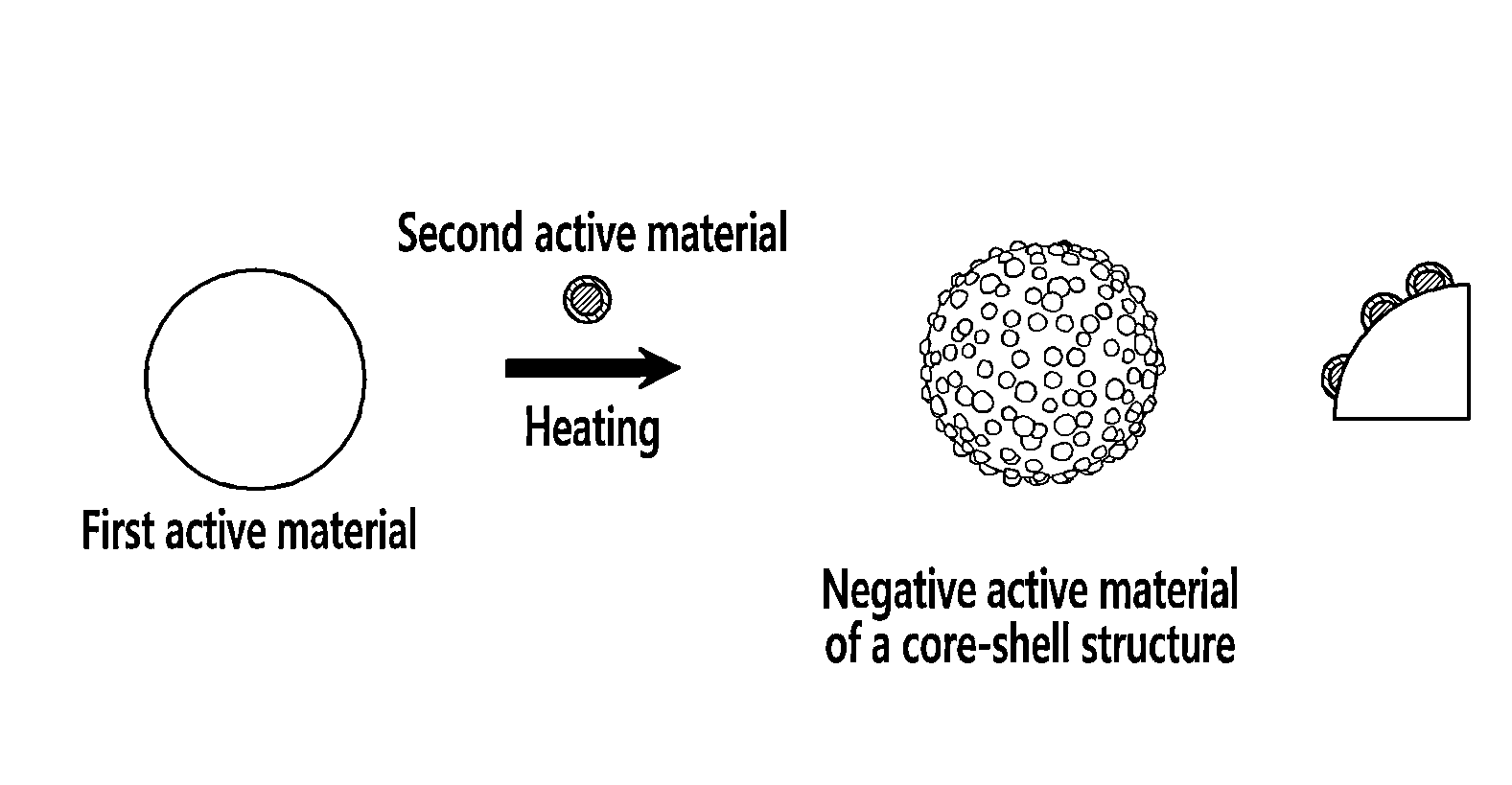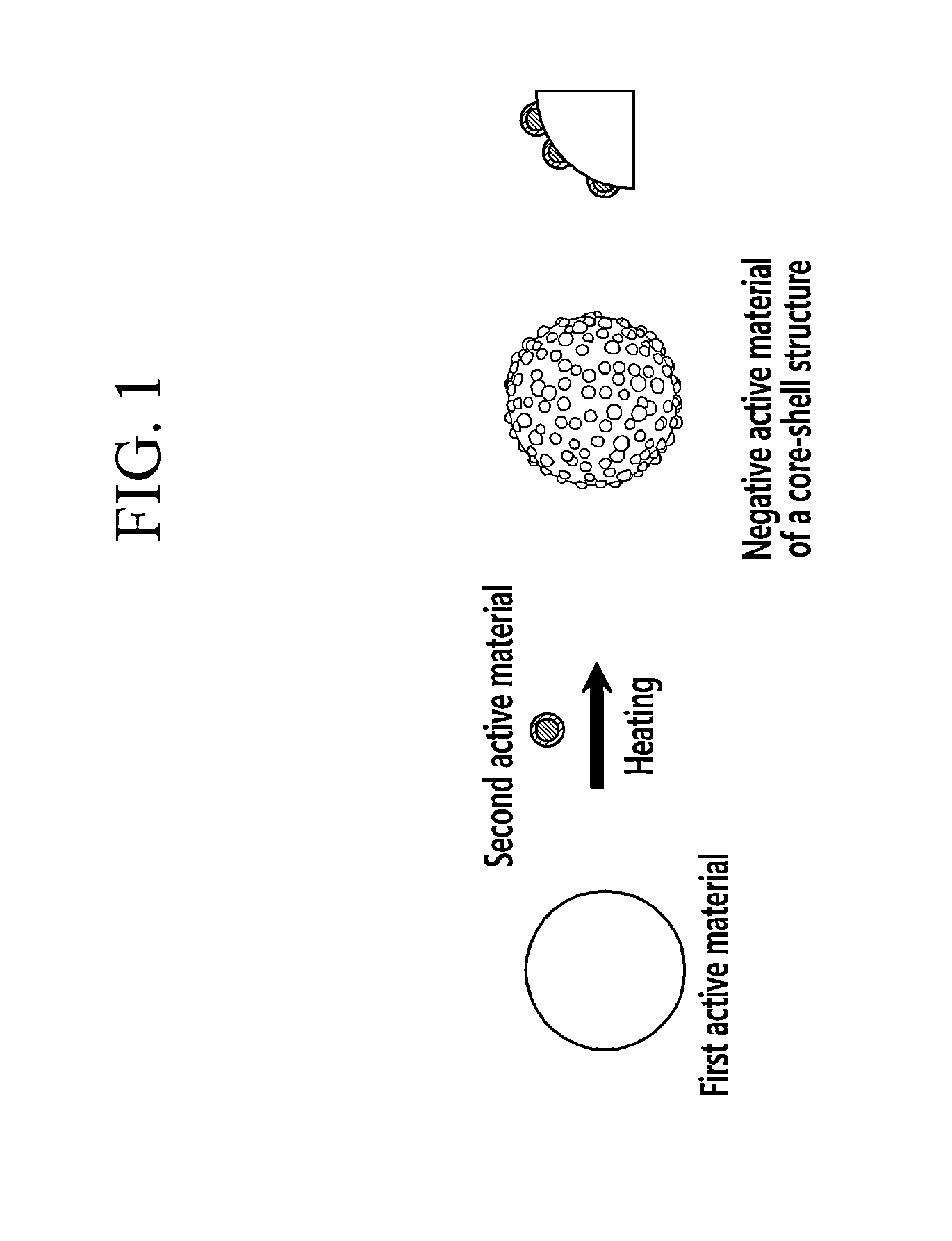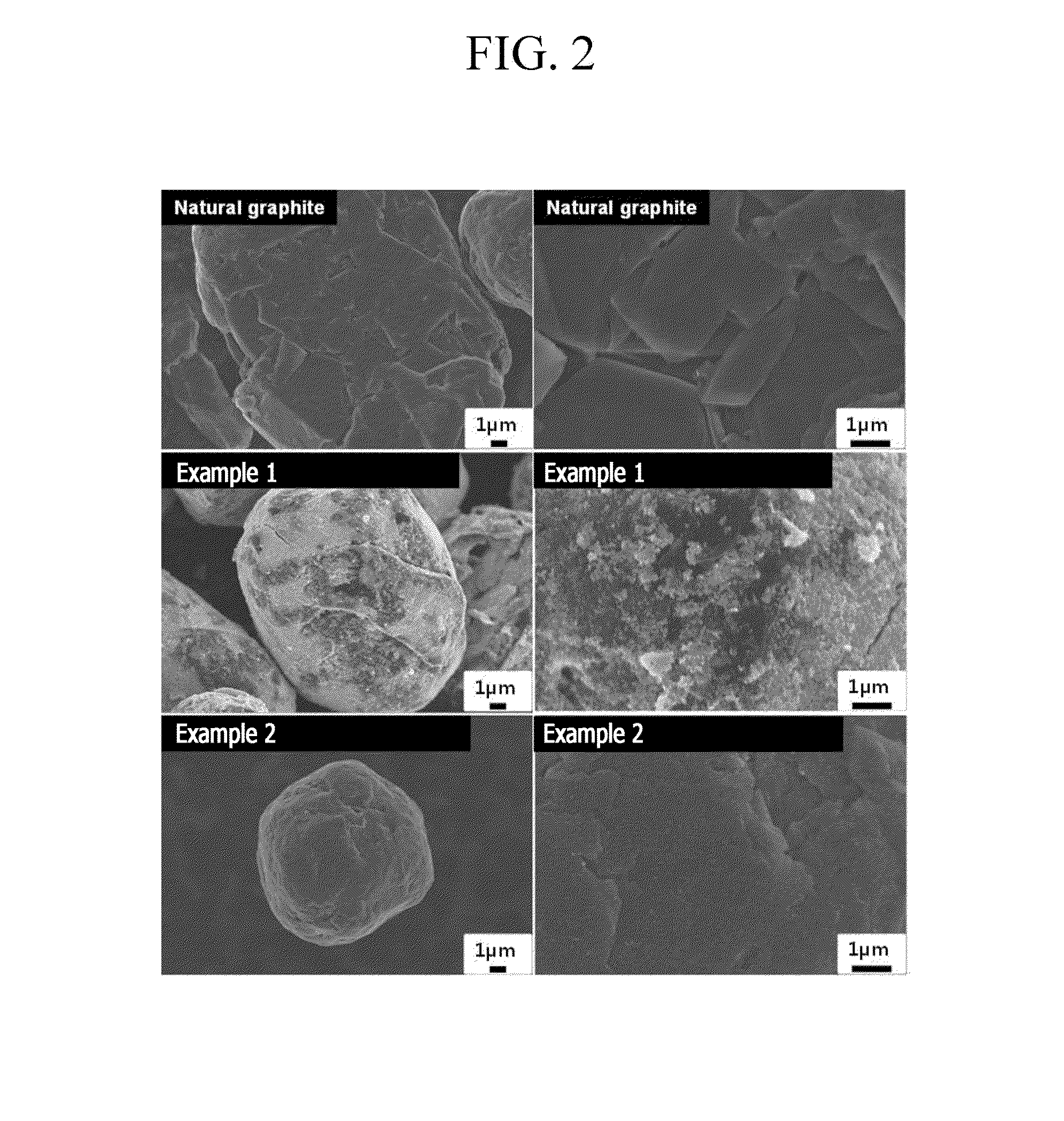Negative electrode active material, method for manufacturing the same, and lithium rechargable battery including the same
a negative electrode active material and battery technology, applied in the direction of electrode manufacturing process, cell components, impregnation manufacturing, etc., can solve the problem of hardly achieving high capacity of rechargeable lithium batteries, volume expansion, and silicon has a sharp deterioration of battery cycle life, etc., to achieve excellent electrical conductivity, increase the storage capacity of lithium ions, and high power
- Summary
- Abstract
- Description
- Claims
- Application Information
AI Technical Summary
Benefits of technology
Problems solved by technology
Method used
Image
Examples
example 1
Manufacture of Negative Active Material
[0100]Natural graphite, a carbon-based material, was used for a core, and ATO coated with carbon was used for a shell.
[0101]The surface of the natural graphite was activated to improve reactivity of a different material from the natural graphite. The natural graphite was put in a solvent consisting of nitric acid, sulfuric acid, hydrogen peroxide, or a combination thereof in a container, and the mixture was agitated for greater than or equal to 30 minutes with an agitator. After the agitation, the natural graphite was separated by using a centrifuge, and the solvent remaining therein was dried in a vacuum oven.
[0102]The coating of the ATO with the carbon is performed as follows. About 1 to 10 parts by mass of a carbon precursor such as citric acid, poly(vinyl pyrrolidone), and the like was added to an aqueous solution in which about 30 mass % of the ATO was dispersed. The mixture was agitated and reacted to uniformly form a shell on the surface...
example 2
[0113]A negative active material and a battery cell were manufactured according to the same method as Preparation Example 1, except for adjusting a ratio of the natural graphite and the shell to be 20:1 by using 0.25 g of a carbon-coated ATO solution (0.075 g of ATO).
example 3
Manufacture of Negative Active Material
[0114]Example 3 adopts firing after simultaneously mixing a core material, ATO, and a carbon-based precursor. The surface of the natural graphite was activated as provided in Example 1. 1.5 g of the activated graphite and 0.5 g of an ATO solution (0.15 g of ATO) dispersed in methanol, and 0.75 g of citric acid were sufficiently mixed for 2 to 3 hours.
[0115]The mixture was dried at 80° C. to remove the methanol remaining therein, and then heat-treated in a 450° C. argon atmosphere for 5 hours. After the heat-treating, a negative active material having an ATO and carbon layer on the surface of the graphite surface was manufactured.
[0116]Herein, a material capable of being carbonized in an inert atmosphere during heat-treating is citric acid, but poly(vinyl pyrrolidone), poly(vinyl alcohol), glucose, sucrose, and the like may be used instead of citric acid.
[0117](Manufacture of Half Cell)
[0118]Hereinafter, a half-cell is manufactured according to ...
PUM
| Property | Measurement | Unit |
|---|---|---|
| thickness | aaaaa | aaaaa |
| temperature | aaaaa | aaaaa |
| thickness | aaaaa | aaaaa |
Abstract
Description
Claims
Application Information
 Login to View More
Login to View More - R&D
- Intellectual Property
- Life Sciences
- Materials
- Tech Scout
- Unparalleled Data Quality
- Higher Quality Content
- 60% Fewer Hallucinations
Browse by: Latest US Patents, China's latest patents, Technical Efficacy Thesaurus, Application Domain, Technology Topic, Popular Technical Reports.
© 2025 PatSnap. All rights reserved.Legal|Privacy policy|Modern Slavery Act Transparency Statement|Sitemap|About US| Contact US: help@patsnap.com



